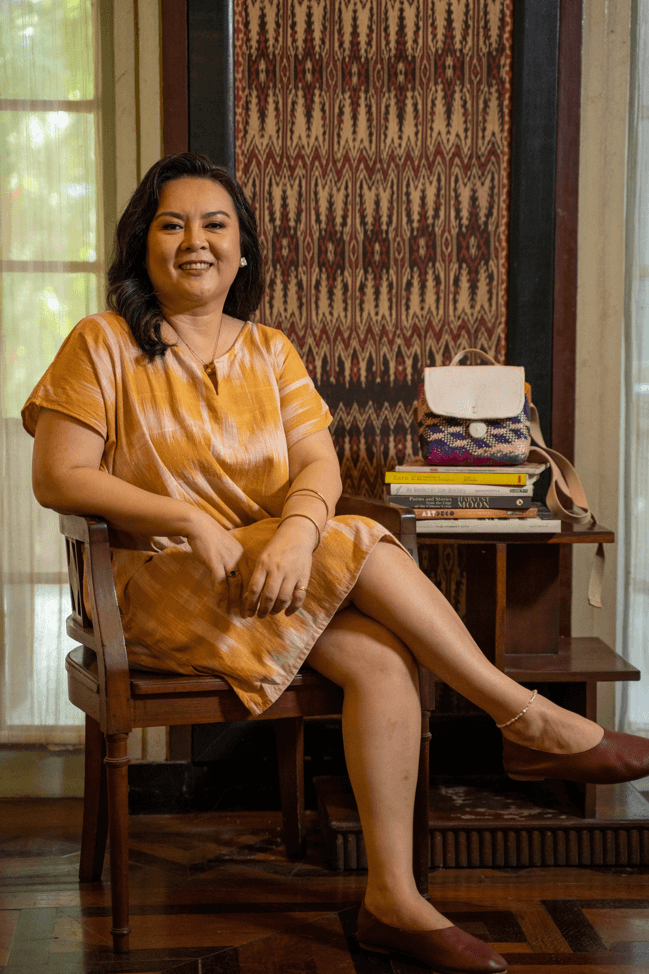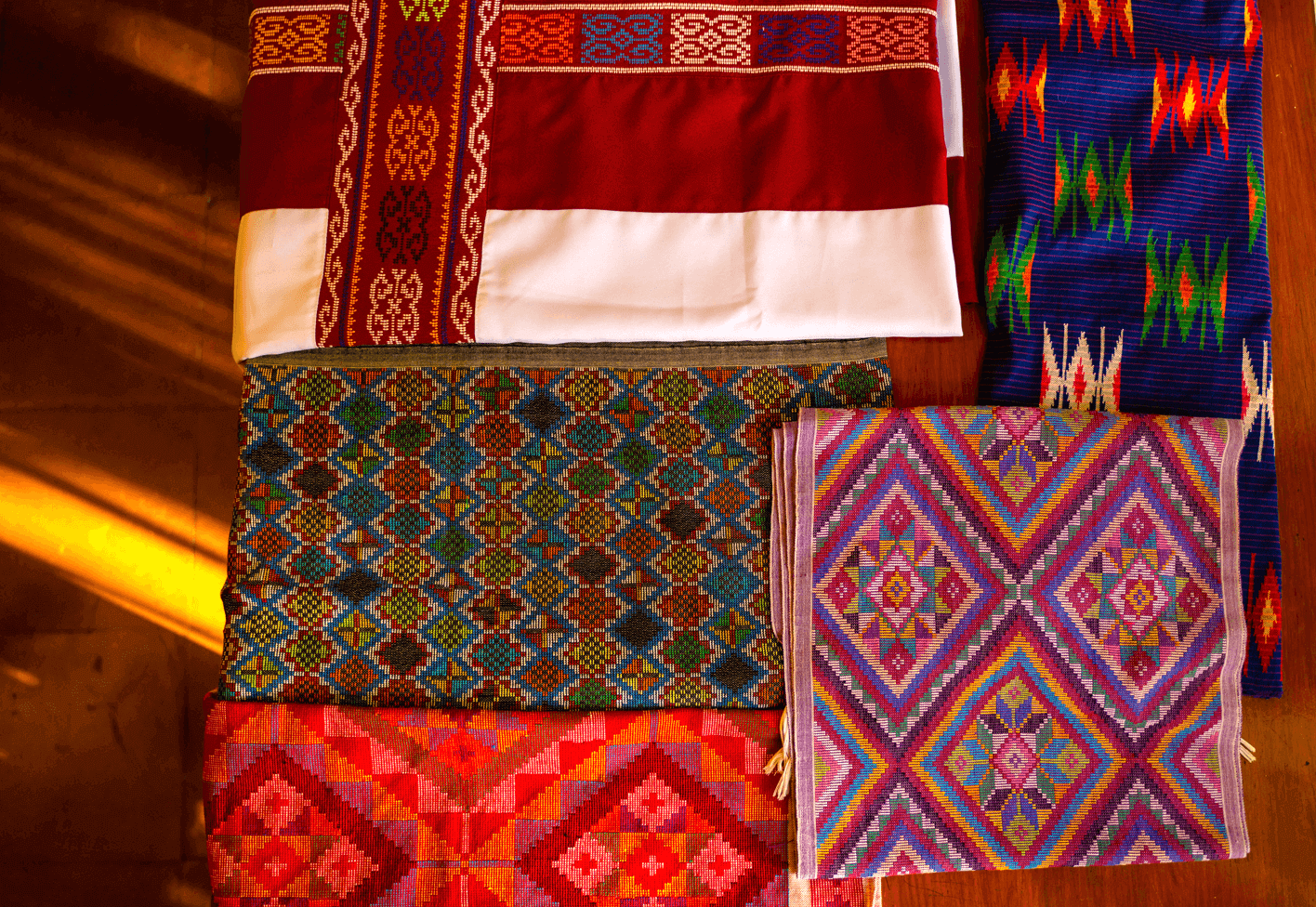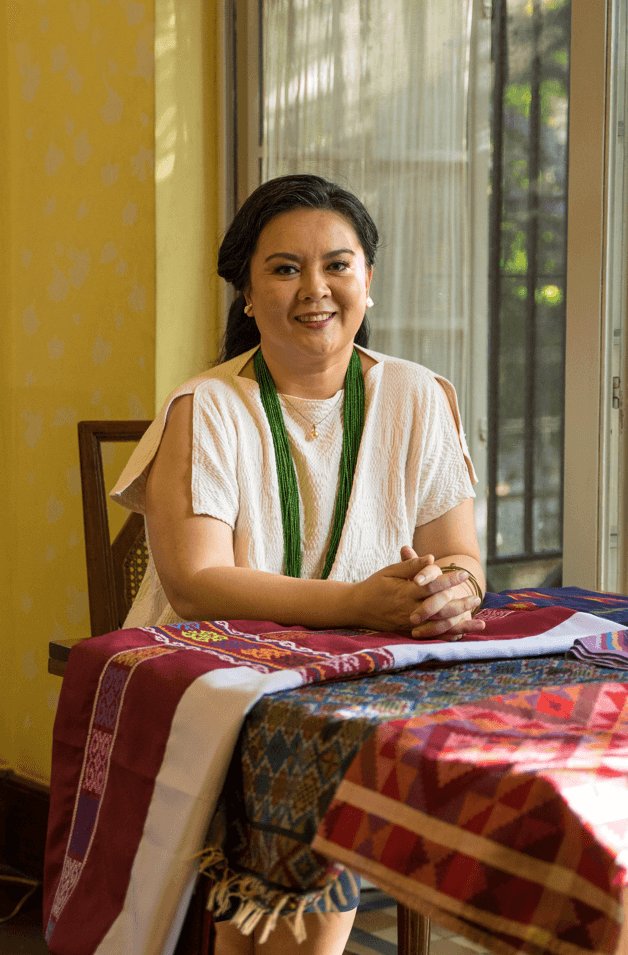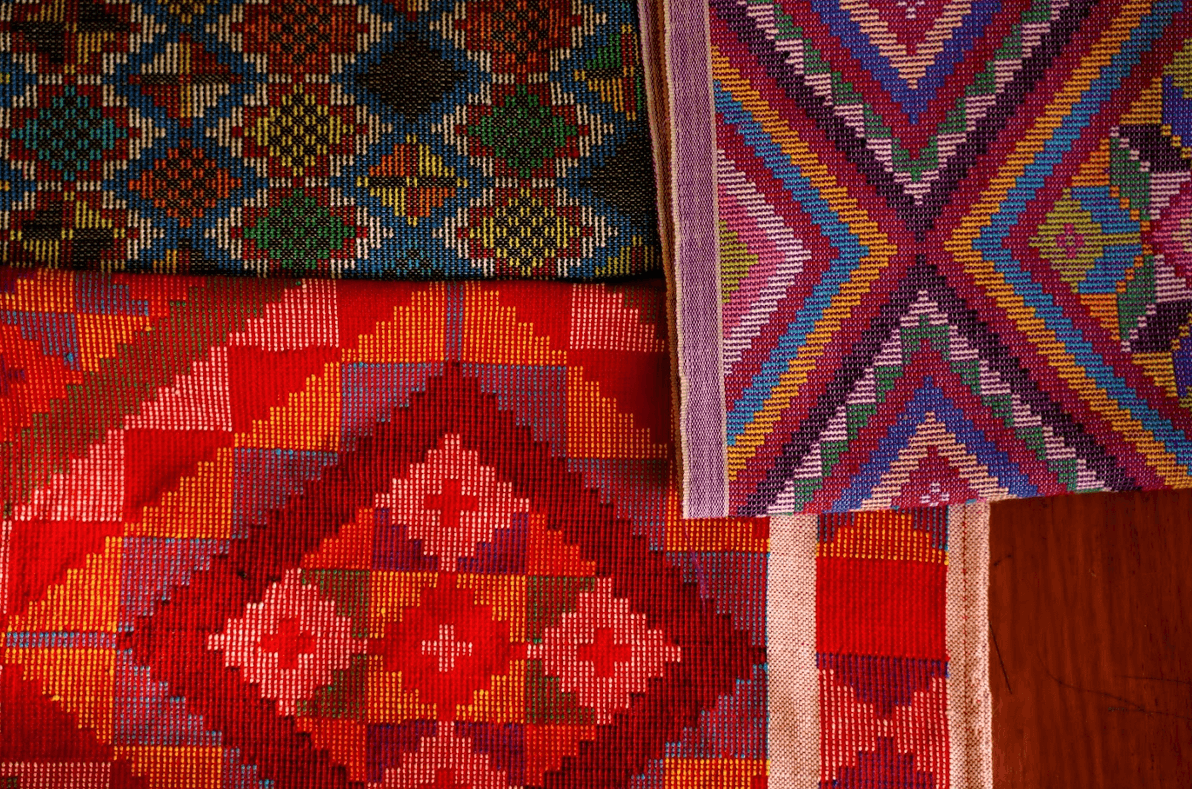Traditional textile advocate and product developer Rambie Lim shares her experiences working with local weavers to keep the spirit of Philippine craftsmanship alive.
Traditional arts are exactly what their label implies—that is to say, traditions. Crafts passed down from one generation to another, and practices that serve as reflections of a people’s culture. However, as the country moves forward with technological advancements, rapid urbanization, and other changes brought about by modernization, certain practices face the threat of disappearing. This is especially true for crafts that require plenty of time and effort. That’s why, now more than ever, communities must gain access to resources that would help them sustainably continue significant traditions. If there’s one person who’s been a staunch supporter of this idea, it’s Rambie Lim.
With decades of experience working with craftspeople from various communities around the country, Lim understands the significance of keeping traditions alive.

READ ALSO: ArteFino: A Festive Showcase of Filipino Craft and Heart
A Life of Craft
Lim is a product developer, traditional textile advocate, and founding member of HABI (The Philippine Textile Council). The multi-hyphenated artist spends her days collaborating with craftspeople to create quality products that are functional and relevant in the current era while ensuring they stay true to their respective culture and heritage.
Recently, Lifestyle Asia sat down with the veteran guardian of traditional crafts to discuss her recent work, as well as what goes into building a stronger community of Filipino artisans in this day and age.
The living room of Lim’s home gave a clear idea of how passionate she is about crafts, particularly traditional textiles. The walls and furniture are adorned with different fabrics from around the country. A large quarter serves as a showroom for vibrant clothing pieces and woven products like bags. One can see stacks of books with titles and topics on all kinds of local weaving lying atop many tables. Lim’s abode epitomizes everything she continues to stand for and work towards.
She began discussing the communities she recently worked with (as the comprehensive list is certainly a long one), her enthusiasm evident through the glimmer in her eyes. Her collected and thorough explanations made her vast years of experience in the field clear.
Threads of Identity
Over the past few years, Lim had been working a lot in Mindanao, specifically with the Maranao, Tausug, and T’boli people.
“The diversity of Filipino crafts is sometimes just mind-boggling,” she told Lifestyle Asia. She cited the work of weavers from Marawi and Sulu: both use a technique similar to crafting tapestries, called “interweave.” Yet, despite the identical process, artisans hailing from the two places produce entirely different outputs or results.

“The Philippines has so many indigenous people, and all of them have crafted their identity through their textiles,” Lim mused. “Each community has extraordinary products, and they have the potential to take it further.”
Despite the looming threat of a slow death or loss of relevance within many craft communities, Lim remains optimistic and determined to change the narrative. “I think being in these communities, speaking with them, discovering with them, gives hope for a future where craftspeople themselves, and those around them, are invested in these products.”
Textile Teamwork
Trust is an integral part of Lim’s collaborative process. To her, it’s a key that opens the door to knowledge, understanding, and of course, effective teamwork.
“I come in as an outsider, and they have every right to protect their culture and techniques,” she explained to Lifestyle Asia. “So being able to communicate with them, where they can trust me enough to discuss [these things], I think that’s always one of my favorite parts [of working with these communities].”
Lim attributes her success to three important things she learned throughout her career. The first being the necessity of learning to communicate in a way that transcends language barriers and cultural boundaries. Though she usually works with a translator, Lim shared that putting in the effort to convey a message with more than just words (like gestures and signing) goes a long way.

The second most important thing Lim has learned is being open to, well, learning. This goes back to her being aware that she’s an outsider in the communities she works with. In order to work with them, one must first understand their customs and culture. Hence, she stresses the need to ask the right questions.
The third lesson is perhaps the beating heart of everything Lim does: and that’s showing genuine interest in the lives that comprise these weaving communities. This begins with appreciating a group of people beyond what they craft.
“Being able to build camaraderie with the craftspeople, for them to be able to accept me as somebody who’s willing to help them is important,” she elaborated.
Strengthening Tradition
The concept of a “tomorrow” is integral to any traditional craft community. When asked what she envisions for the Philippines’ local weavers, perhaps five years down the line, Lim stated: “The future of Philippine crafts and textiles is really in the next generation.”
To the product developer, this involves providing the next generation with the space and resources to learn, experiment, and explore using the right materials and modern standards. This isn’t to say that tradition must be superseded by the new. Rather, it’s about enriching the beauty and diversity of local crafts through processes that boost their value and extend their life.

“Normally, [the communities] make all these crafts for their own consumption,” Lim explained. As such, creating long-lasting and polished products isn’t always a priority. However, in order to share these products and bring them out into the world, Lim and the artisans she works with must now consider how to make them last longer or look more like finished products.
So, it’s not so much a story about artisans replacing the old with the new, but rather, adapting new techniques to match the old ones.
Lim cited a recent example of this, which occurred when she was working in Sulu. Artisans used to use a particular dye to color the dried pandan leaves for their banigs. However, Lim noticed that the specific brand was quite outdated and difficult to find. With assistance from the Design Center of the Philippines, they found alternative natural resources and methods to dye the leaves for nicer, more sustainable, and long-lasting colors.
Of course, before any new changes are proposed and applied, Lim goes through extensive discussions with the artisans. This ensures that they stay true to the characteristics and heritage of their crafts.
More Than Just a Craft
Lim believes that her efforts have helped contribute to a brighter future for local crafts. She recalls a time in the mid-2000s, where the state of Philippine textiles was abysmal. Lim once visited the Bangar market in La Union only to find that the number of weavers selling goods had decreased considerably. Many artisans were in their twilight years, with hardly any youth to pass their practice to.
However, thanks to the efforts of organizations like the Philippine Textile Council, there’s been an uptick in interest among younger people. Lim credits this to the re-framing of what local crafts can be.

“What’s important is they see that they can actually earn from the crafts that they’re making,” she told Lifestyle Asia. “In the early 2000s, when everybody was going to learn how to be nurses, what weavers didn’t realize is that their weaving was sending their children or grandchildren to learn how to be nurses.”
She continued: “So I think giving these communities, these craftsmen, a better understanding of how they can build their business [will help them] see the potential of their weaving.”
Changing Mindsets
To Lim, a change in attitudes for both buyers and craftspeople will help sustain and promote tradition for years to come. In other words, woven goods must be viewed as more than just decorative pieces. “They’re part of our brand, part of our wardrobe. Part of what we buy when we’re thinking about something that we need in our household or as gifts,” Lim stated.
Indeed, everyone has a part to play in ensuring that the country’s rich traditions don’t just survive, but also thrive. While no one really knows what the future holds, with people like Lim and the many dedicated craftspeople she works with, it’s certainly in good hands.
Photos by Gian Escamilla.





